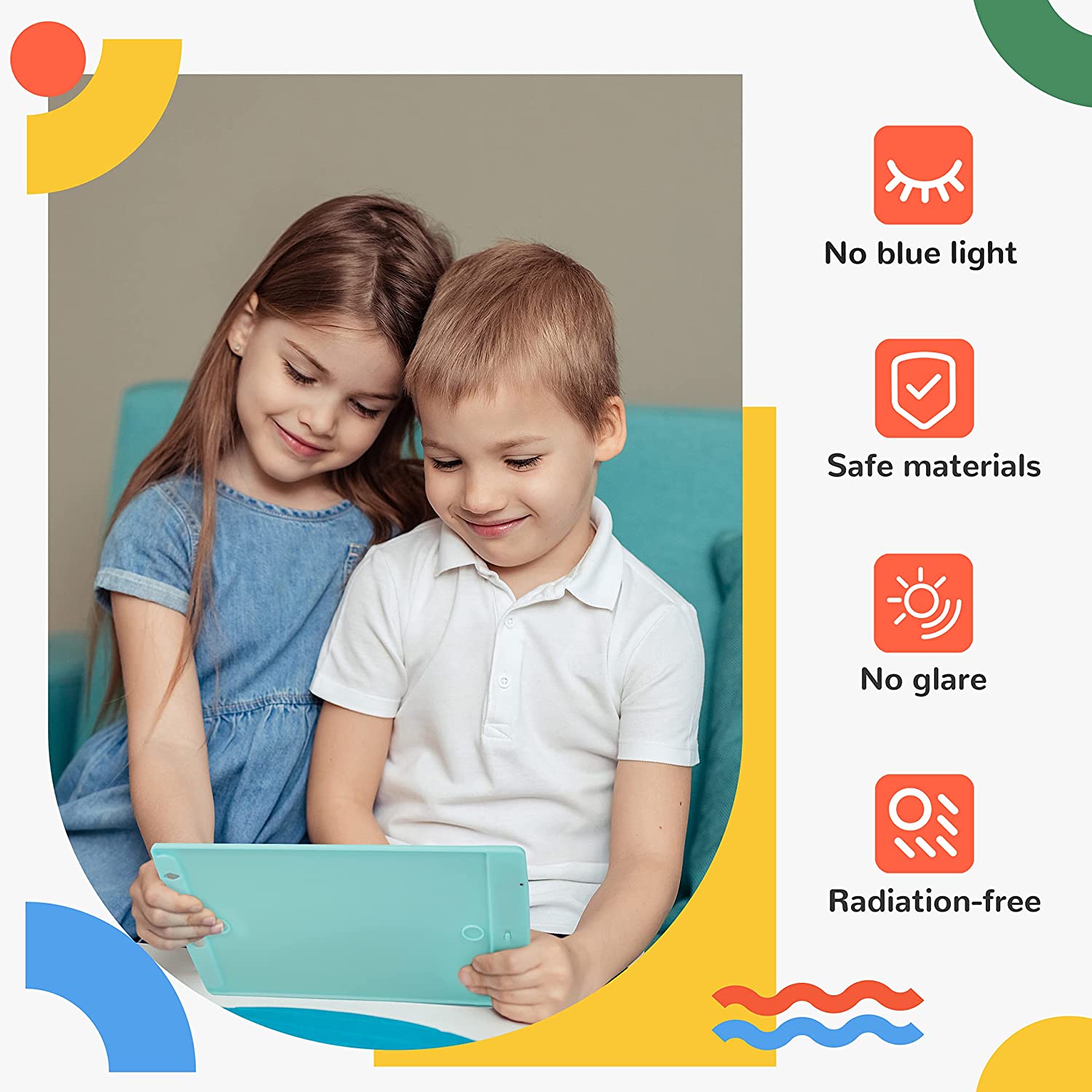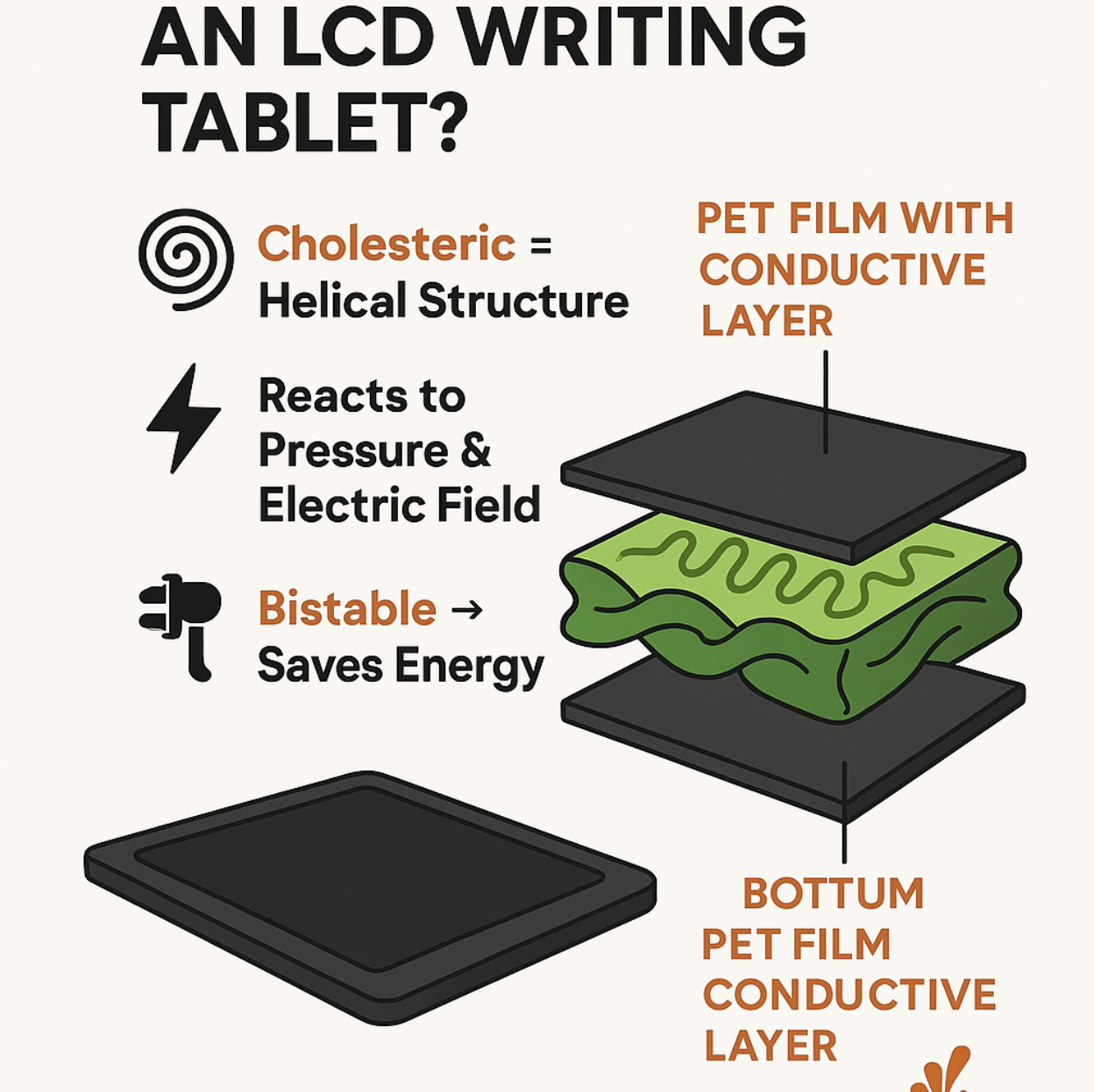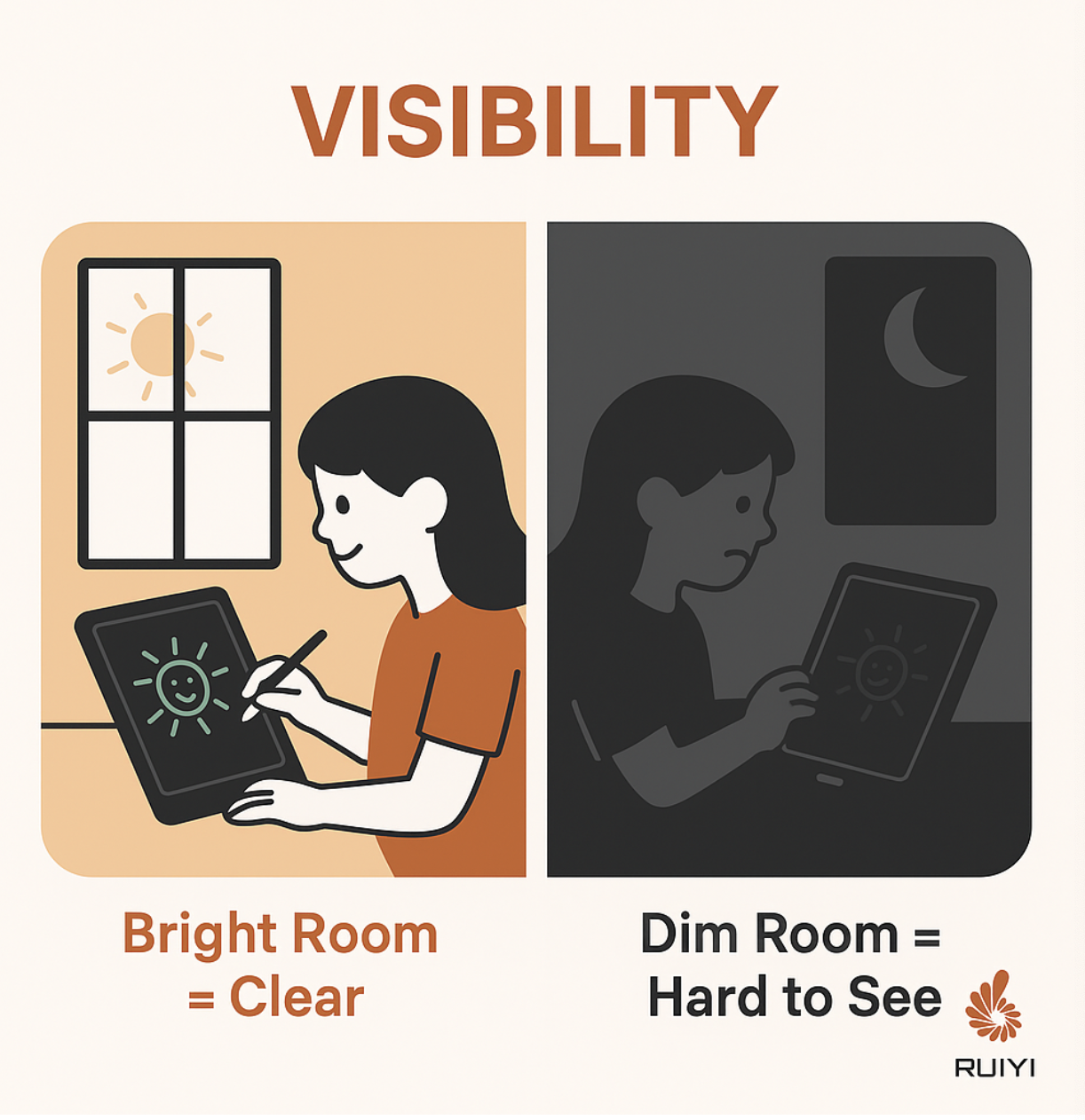Are LCD Writing Tablets Safe for Eyes?
I’ve seen parents constantly worry about screen time damaging their children’s eyes. LCD writing tablets seem like a better alternative to regular screens, but many wonder if they’re truly eye-friendly.
LCD writing tablets are safer for eyes than traditional screens because they use pressure-sensitive reflective technology without backlighting or harmful blue light emissions. Similar to paper, they reflect ambient light naturally, reducing eye strain during extended use.
As a manufacturer focused on eco-friendly writing solutions, I’ve spent years researching and developing LCD tablets that prioritize user health. The technology behind these devices is fascinating and fundamentally different from what powers your phone or computer screen. Let me explain why these differences matter for your eyes.
Is LCD Writing Tablet Technology Safe for Eyes?
Parents often ask me whether these tablets will harm their children’s vision. The traditional screens we use daily emit light directly into our eyes, causing strain and fatigue.
LCD writing tablets1 use passive reflective display technology rather than emitting light directly into your eyes. They work by reflecting ambient light like paper does, creating high contrast between the written marks and background without any radiation, flickering, or blue light that typically causes digital eye strain.
When I first started designing LCD writing tablets at Ruiyi Plastic Products, our primary goal was creating a truly eye-friendly alternative to traditional screens and paper. Traditional screens work by projecting light directly at your eyes, which causes the familiar eye strain, headaches and disrupted sleep patterns many experience after prolonged use.
Our LCD writing tablets function completely differently. They use a reflective LCD layer that works without any electricity during writing and only needs minimal power during erasure. There’s no backlight and no direct light emission. Instead, the tablet works like paper – it reflects the ambient light in your environment.
The contrast between the written marks and background is created through pressure disruption of the liquid crystal molecules, not through light emission. This is why you can use these tablets in bright sunlight (try that with your phone!) and why they don’t work in complete darkness (just like paper). The natural reflection mechanism means your eyes focus in a way that’s much closer to reading printed materials than using a screen.
Are LCD Screens Safe for Kids?
Many parents come to me worried about adding yet another screen to their children’s lives. They’ve heard about blue light and digital eye strain.
LCD writing tablets are safer for children’s eyes than digital screens because they don’t emit blue light or cause digital eye strain. Unlike phones or tablets, these devices don’t stimulate dopamine through notifications or content, reducing addiction risks while still providing an interactive writing experience.
When designing products specifically for children, I’ve always believed safety should be the absolute priority. After years of manufacturing both traditional LCD screens and writing tablets, I can confidently explain the crucial differences regarding children’s eye health.
Traditional digital screens that children use (tablets, phones, computers) emit blue light directly into their eyes. This high-energy visible light penetrates all the way to the retina and can cause premature eye aging and potentially contribute to macular degeneration over time. Children’s eyes are especially vulnerable because their lenses are clearer and filter less blue light than adult eyes.
Our LCD writing tablets don’t emit any blue light whatsoever. The technology is completely passive during writing – only requiring power for the erase function. Additionally, traditional screens refresh many times per second, creating imperceptible flickering that contributes to eye fatigue and headaches. LCD writing tablets maintain a static image with zero refreshing or flickering.
Another significant advantage is the reduced risk of digital addiction. Regular screens stimulate dopamine through constant notifications, videos, and interactive content. LCD writing tablets provide the interactivity children need for learning without these addiction-forming mechanisms, making them ideal for development while protecting vision health.
What is Inside an LCD Writing Tablet?
I’ve had many customers ask what makes these tablets different from regular screens. The internal components explain why they’re better for eyes.
An LCD writing tablet contains several layers: a hard protective surface, a pressure-sensitive LCD layer with liquid crystals suspended between two thin films, a reflective background, and a rigid backing. When pressed, the crystals realign to create visible marks without any light emission or power consumption.
During my years developing these products, I’ve dissected hundreds of tablets to improve their design and durability. The internal construction is fascinating and quite different from traditional electronic devices. Let me walk you through the layers from top to bottom:
-
Protective Surface Layer: This hard plastic layer protects the delicate components underneath while providing a smooth writing surface. We typically use polycarbonate for its durability and scratch resistance.
-
Liquid Crystal Display Layer: This is where the magic happens. Unlike traditional LCD screens that sandwich liquid crystals between electrically charged layers to manipulate light transmission, our tablets use pressure sensitivity. The liquid crystal molecules are suspended in a thin film between two flexible sheets. When pressure is applied with a stylus or finger, the crystals realign, creating the visible marks.
-
Reflective Background Layer: Behind the LCD layer sits a reflective background (typically white) that serves as the "paper" portion of the display. This layer is crucial for the tablet’s eye-friendly properties as it reflects ambient light rather than producing its own.
-
Rigid Backing Structure: The final layer provides structural support for the entire assembly and houses the simple circuit board that controls the erase function.
-
Circuit Board and Battery: Unlike power-hungry screens, the only electronic component is a small circuit that creates an electrical field to reset the crystal alignment during erasure. This minimal circuitry allows the coin-cell batteries to last for months or years.
This construction creates a fundamentally different user experience from traditional screens. When writing, the device consumes zero power and emits zero radiation – it’s entirely mechanical and optical. This explains why these tablets are so much gentler on the eyes than any light-emitting device.
Which Liquid is Used in an LCD Writing Tablet?
Customers often wonder about the safety of the materials inside these tablets, especially the liquid component.
LCD writing tablets use non-toxic cholesteric liquid crystals, microscopic rod-shaped molecules suspended in a polymer layer. These organic compounds twist to reflect light differently when pressure is applied, creating visible marks without any electricity or harmful chemicals.
In our manufacturing facility, we work carefully with these specialized materials every day. The specific type of liquid crystal used in writing tablets is called cholesteric liquid crystal, named because its molecular structure resembles cholesterol molecules. Unlike older LCD technologies that used potentially harmful materials, modern cholesteric liquid crystals are non-toxic organic compounds.
These microscopic rod-shaped molecules naturally arrange themselves in a twisted, helical structure. When pressure is applied, this structure changes, altering how the crystals reflect light. This creates the visible contrast between written marks and the background. The beauty of this technology is that it requires no power to maintain the image – the crystals stay in their new position until reset by an electrical field during erasure.
The liquid crystal layer is completely sealed between protective films, making it virtually impossible for users to come in contact with the material. Even in the rare case of damage, the tiny amount of liquid crystal material poses minimal risk. Our products undergo rigorous safety testing to ensure they meet international safety standards including EN71, ASTM F963, and CPSIA requirements for children’s products.
The environmental benefits extend beyond eye safety – these stable compounds allow the tablets to operate for years on a single small battery, dramatically reducing electronic waste compared to paper or traditional electronic devices. When designing our products, we carefully select materials that balance performance, safety, and environmental impact.
Conclusion
LCD writing tablets offer a genuinely eye-friendly alternative to traditional screens and paper by using reflective technology without harmful light emissions. They’re especially beneficial for children’s developing eyes while still providing an interactive。
-
Explore how LCD writing tablets can be a safer alternative for children’s vision compared to traditional screens. ↩
You may also be interested in:
Contact Us
Phone
+86 18975761579Website
ruiyiboard.comAddress
Shenzhen Longhua, Guangdong, China
Shenzhen Ruiyi Plastic Products Co., Ltd. is a professional manufacturer focused on eco-friendly writing products since 2016.
Our mission is to provide paper-free, ink-free, safe and environmentally friendly electronic writing solutions.





